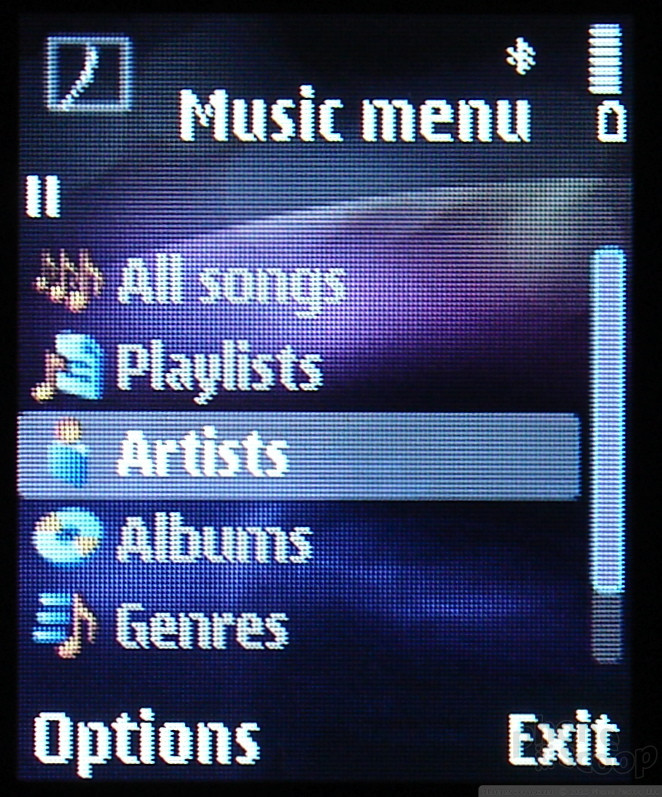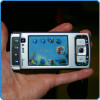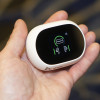Review: Nokia N75
The N75 comes with the Symbian S60 3rd Edition operating system. This makes the N75 a powerful phone in that it is highly customizable and can run countless applications. For all the complex things it can do, the basic features of the N75 are easy to figure out.
The main menu of the N75 is reached by tapping the dedicated button to the left of the D-pad. It has 12 selections from which to choose, all reachable via the corresponding keypad shortcuts or scrolling with the D-pad. A number of them are simple applications. There are also four folders here that open up to reveal more applications and tools. The tools folder, for example, houses 20 applications and the settings folder brings you to 17 different control applications. Some of the settings menus, such as the "configure" application, is where you would change most of the basic settings of the phone. When you first go in there, you find a list view of 9 different dashboards. It's very utilitarian in that, once you open any of the dashboards, you can scroll sideways through the others without having to return to the main list first. As you scroll sideways, each dashboard brings up the list of options underneath it. Applications work the same way as well, allowing you to scroll sideways through different sections once you have chosen one from the main list. The games and applications folder is where apps you download from the Internet land. If you want to move them elsewhere for easier access, that is an option.
The basic home screen of the N75 is blank and only shows the status indicators along the top. In "active standby" mode, the N75 will populate the screen with up to 6 applications of your choosing, as well as a listing of your upcoming calendar appointments. These shortcuts let you jump directly to certain apps and functions and circumvents diving into the menu system.
Because the functionality of S60 is so vast, the menus can be altered, moved and customized at will. This also means they can be overbearing for beginning users. Altering some settings of the phone really requires you to dig into the menus and some choices aren't always obvious. For example, many phones let you automatically adjust the volume of the phone by using the volume keys on the side of the phone. Not so the N75. You have to jump into the settings menu. First time users won't know that hitting the power button brings up a quick pull-down menu that lets you switch profiles (ringer settings).
As we've noted with other Nokia phones, the menu system takes a little bit of getting used to, but once you're familiar with the ins and outs of S60, it's a strong platform and can perform most any task you ask of it.
One thing we just have to say. The N75 is not the fastest phone on the market. Jumping from menu to menu and application to application often shows a serious lag in processor speed. On top of that, if you fail to "exit" applications, they remain open in the background. If you're busy jumping around between apps, all too often you'll be warned with "Memory Full" messages. These mean you have to go back and actually "exit" from the apps you might have forgotten were open. These two hiccups got in the way of speedy use of the N75 from time to time.











 Nokia Open Studio Fall 2006
Nokia Open Studio Fall 2006
 iPhone 14 Plus Offers a Big Screen For Less
iPhone 14 Plus Offers a Big Screen For Less
 TCL's Newest Concept Phone has a Matte Screen
TCL's Newest Concept Phone has a Matte Screen
 Hands On with Teams-Certified Bluetooth Earbuds
Hands On with Teams-Certified Bluetooth Earbuds
 iPhone 15 Series Goes All-In on USB-C and Dynamic Island
iPhone 15 Series Goes All-In on USB-C and Dynamic Island
 Nokia N75
Nokia N75


